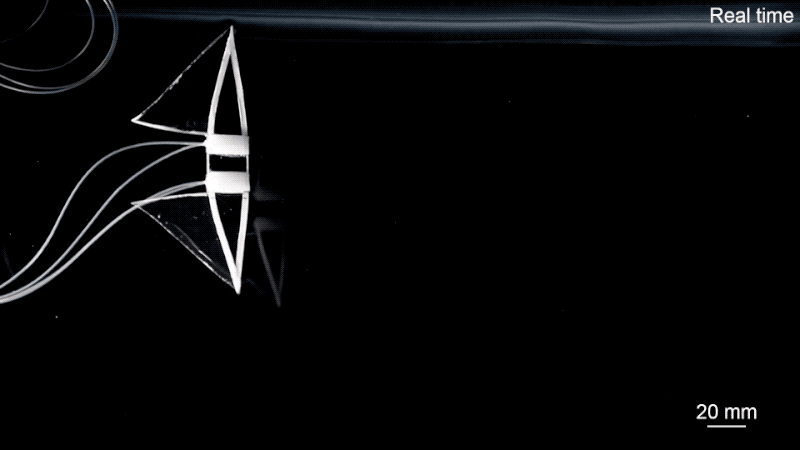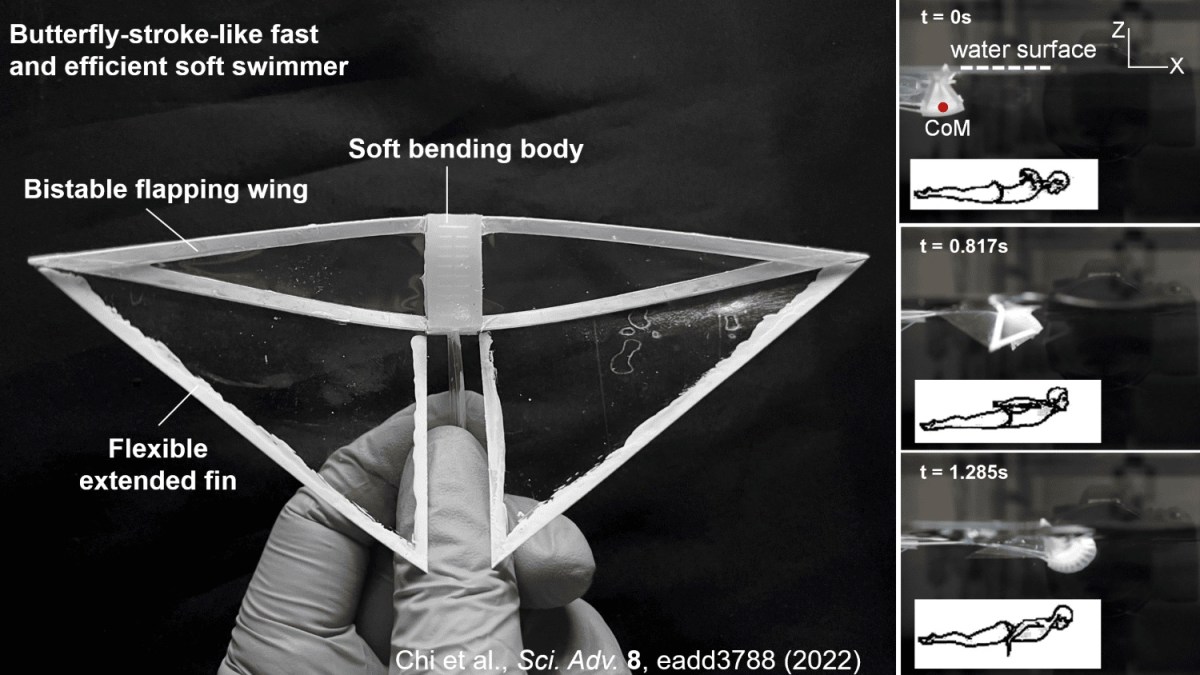This manta ray-inspired soft robot flies through the water
Biologically inspired soft robots make a lot of sense in a lot of different scenarios, but as with any class of technology, they have their limitations. Among other things, these compliant structures can struggle to move at the same speed as their more rigid counterparts. To help speed up swimming, a team of researchers at North Carolina State University turned to another bit inspiration from nature: the manta ray.
Looking toward the fish makes sense. These cousins of sharks effectively fly through water courtesy massive, wing-like pectoral fins. Ultimately, however, the researchers named them after a different animal altogether. The “butterfly bots” are so deemed for their resemblance to the arms of humans performing the butterfly stroke [see: the above image].
Two versions of the robot were built. The first was designed specifically for speed, with the ability to move 3.74 body lengths per second – a big increase over soft robots that struggle to move a single body length in that time. A second, designed for more control, moves around 1.7 body lengths a second. In the first case, the design makes turning an issue. With the second, the team added a second drive train to turn the robot by flapping a single wing at a time.

“To date, swimming soft robots have not been able to swim faster than one body length per second, but marine animals – such as manta rays – are able to swim much faster, and much more efficiently,” the paper’s co-author, Jie Yin, says in a release. “We wanted to draw on the biomechanics of these animals to see if we could develop faster, more energy-efficient soft robots. The prototypes we’ve developed work exceptionally well.”
The body is bent up and down using a pneumatic air tube system, which in turn bend the wings/fins, propelling the system forward. Yin adds, “Most previous attempts to develop flapping robots have focused on using motors to provide power directly to the wings. Our approach uses bistable wings that are passively driven by moving the central body. This is an important distinction, because it allows for a simplified design, which lowers the weight.”
The team says it’s working on an autonomous, untethered version of the soft swimming butterfly robot.




